17 Awesome Day Trips from Kutaisi
Kutaisi itself is a pretty nice city. The Old Town is enchanting, the cathedrals and churches definitely worth a visit even if you’ve been in Georgia for a while (they tend to get boring after the first 10, don’t they?) and the Green Bazaar is so cool!
You can find out about all the things to do in Kutaisi. But there are many other places to visit around Kutaisi that make the whole region of Imereti so culturally rich!
In this article, I will bring you to my favorite places within 2 hours of Kutaisi. These day trips include caves, canyons, monasteries, balneo resorts, and marvelous natural sights.
I’ve also included information on how to reach them independently and the best tours you can book.
1. Tskaltubo
Tskaltubo was a huge spa resort back in Soviet times, but it fell into disrepair after the dissolution of the USSR. It was one of the most popular resorts not only in Georgia, but in the whole Soviet Union, and Stalin even had a private bathhouse for when he visited his home country.

The village of Tskaltubo is very close to Kutaisi at about 15 km northwest. You can reach it by taking Marshrutka #30 from the Red Bridge. It leaves every 20 minutes and costs 2 GEL.
Nowadays though most of the old hotels are falling apart. Why visit? Exactly to roam the ruins and explore some old Soviet architecture.
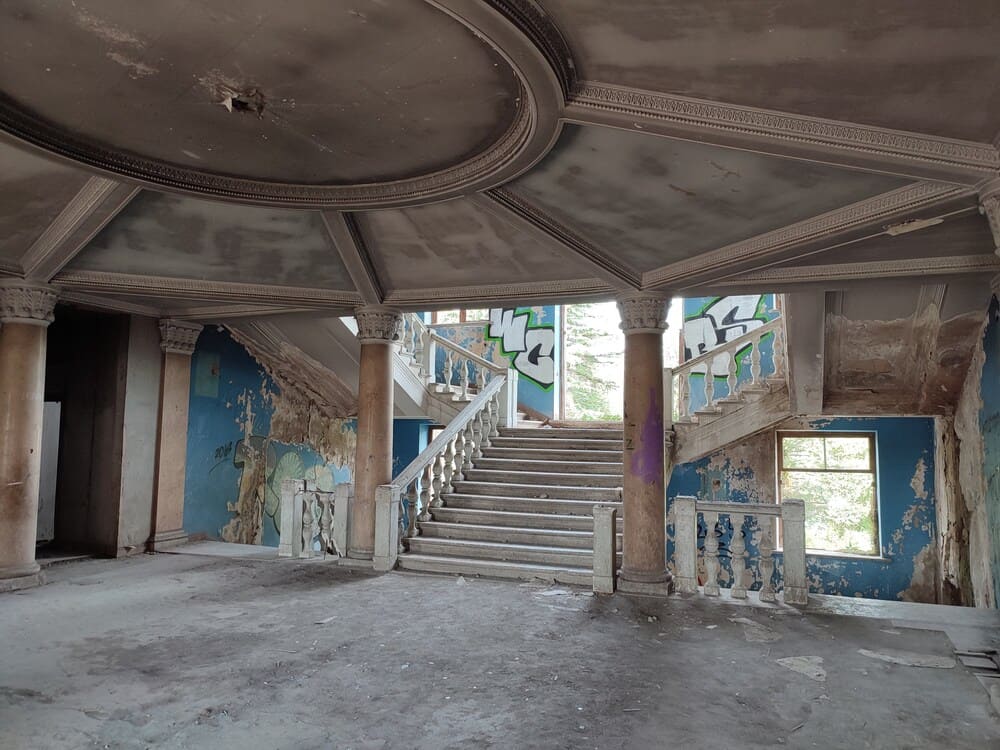
Most guides nowadays claim that the hotels are closed and one cannot enter, but that’s not true. Just exercise caution and don’t go anywhere that seems too ruined. Other than that, you can freely go into all of the old ruins.
The main ones are:
- Hotel Imereti
- Savane Hotel
- Sanatorium Iveria
- Bathhouse #5
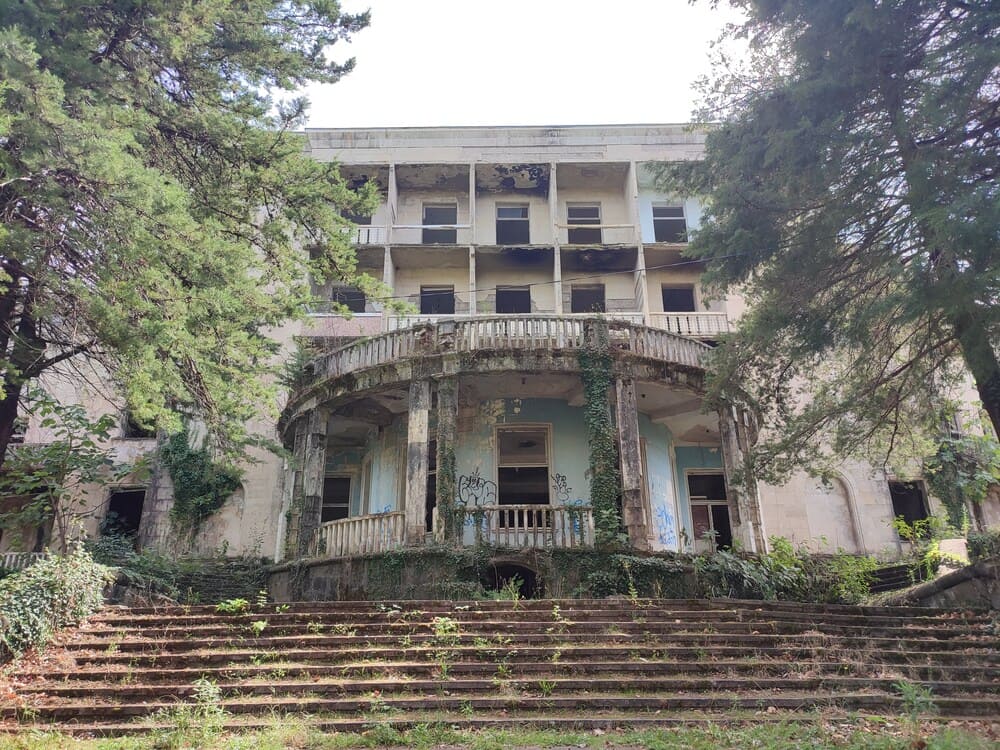
If you want to have everything planned out for you by a guide, opt for this tour instead:
2. Prometheus Cave
From Tskaltubo take marshrutka #42 which will take you to one of the biggest caves in Europe – Prometheus Cave.
It is located in Tskaltubo municipality near the village of Kumistavi.
There are 22 halls in the cave but only 6 of them are open for visitors. That’s still an impressive number! Consider that most caves don’t even have that many halls and those that do only have 1-2 open.
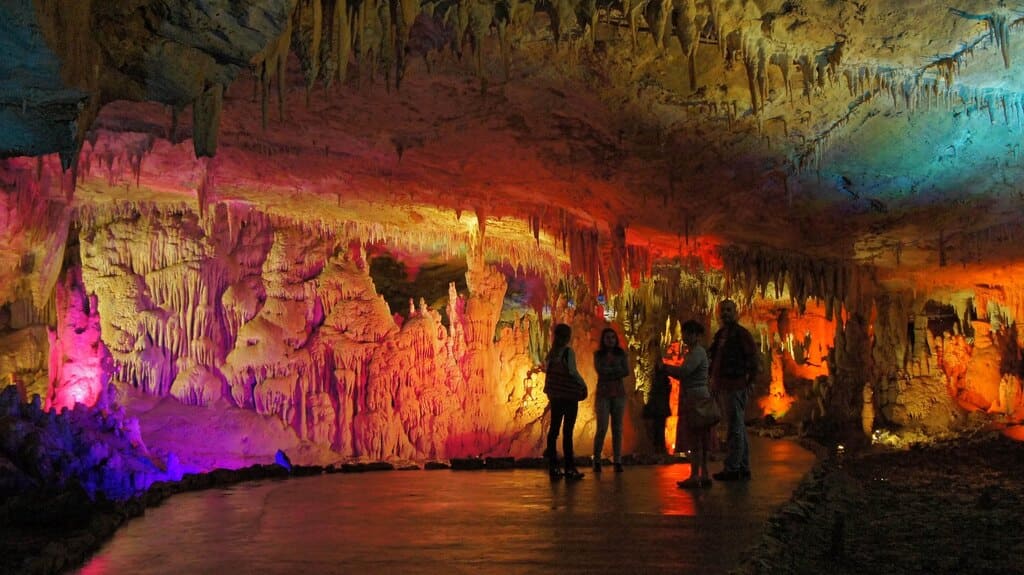
The entire length of the open area of the cave is 1420 and it is possible to walk through it. The stalactites (from the ceiling), stalagmites (from the ground up), and stalagtones (connected) are impressive and awe-inspiring.
The entrance fee is quite pricy at 23.5 GEL for foreigners, but worth it as the cave is quite beautiful.
There’s also an optional boat ride inside the cave for an extra 11 GEL.
Check out these tours that combine Prometheus Cave with Okatse and Martvili canyons:
3. Tetra Cave
That’s supposedly a radioactive cave used as a healing chamber. I am (and a lot of scientists as well) skeptical that radioactivity, even in small doses, can be beneficial, so this is a big no-no for me.
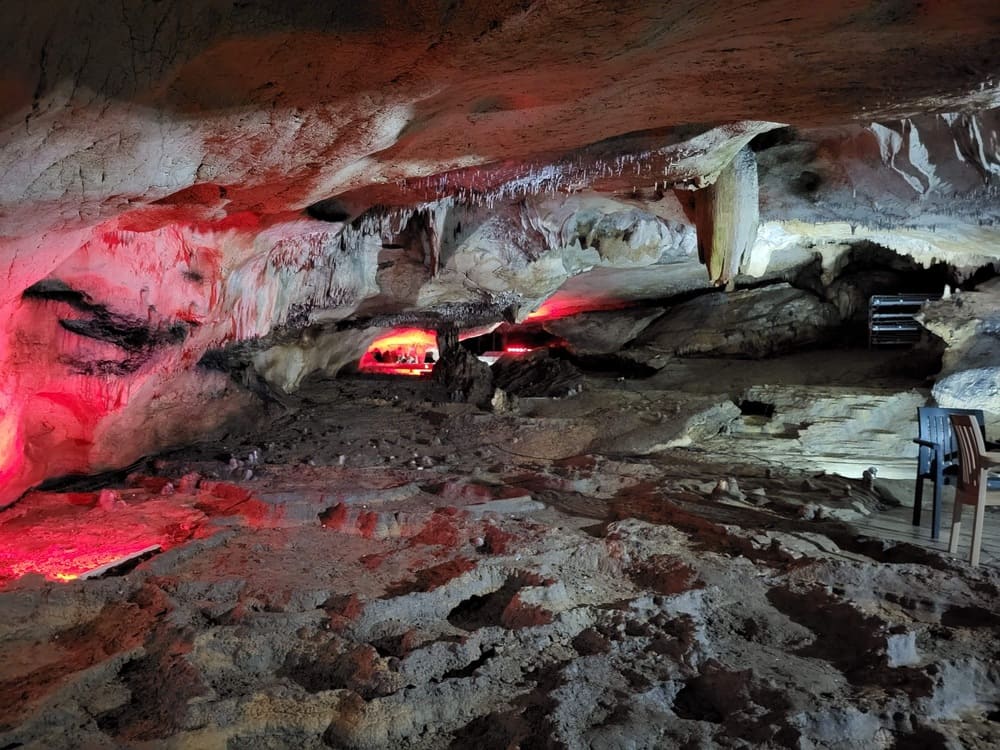
With a price tag of 16 GEL (6$) for 10 minutes inside I feel it’s quite the rip-off.
Still, if you’re looking for a unique experience (and potentially cancer in a few years… I’m only joking, it’s definitely very little radiation), the cave is 20 minutes walking from the bus station in Tskaltubo.
4. Sataplia Nature Reserve

I chose to walk there from Tskaltubo – it’s about 11 km or about 3 hours because the last part is uphill. Almost no cars passed until the last part when I managed to hitch a ride to the top.
The entrance fee to the park is 17.25 GEL (6.5$) and you must join the tour that’s every 30 minutes to 1 hour. Honestly, I feel this place is quite a rip-off.
You can see some very faint dinosaur footsteps – lower your expectations. Then lower them some more.
The cave is pretty nice, especially if you come from a country with little or no caves, but it’s safe to say that the ones in Bulgaria are impressive at least as much as this one, if not more.

There are some life-size dinosaur statues for the kids and probably the highlight – a viewing platform towards Kutaisi. All in all, it’s nice but the price is high.
Going back was going to be a leisurely downhill hike towards Kutaisi (7 km), but the moment I stepped into the forest it started raining heavily, so I turned around and asked the others from the tour for a ride to the city.
A lovely Polish couple took me in their rental and dropped me off in front of my hostel. Kudos!
5. Gelati and Motsameta Monasteries
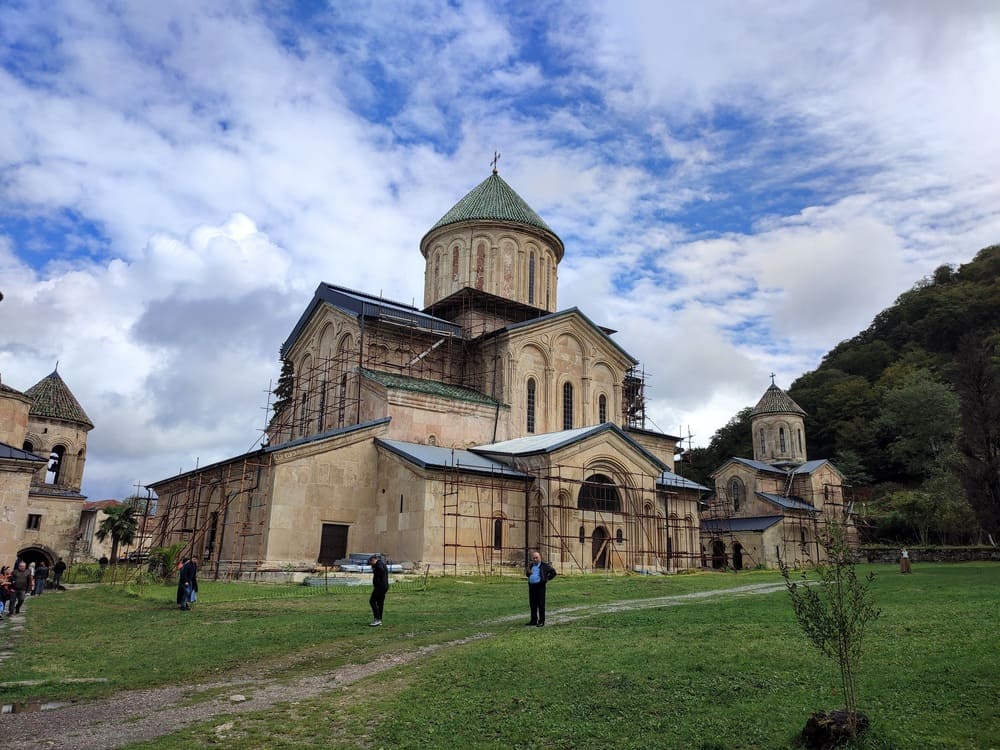
These two, especially Gelati, are usually the main reason people visit Kutaisi.
Gelati Monastery is a UNESCO heritage site and one of the oldest monasteries in Georgia.
To get to Gelati Monastery, take a marshrutka from behind the Drama Theatre in Kutaisi. It leaves at 8 AM, 11 AM, 2 PM, 4 PM, and 6 PM and costs 1GEL/0.35EUR.
It drops you off in front of Gelati Monastery where you can explore this wonderful site.
From Gelati, most people (including me) opt to walk to Motsameta. Go down the hill from Gelati and after leaving the village look for the train tracks.
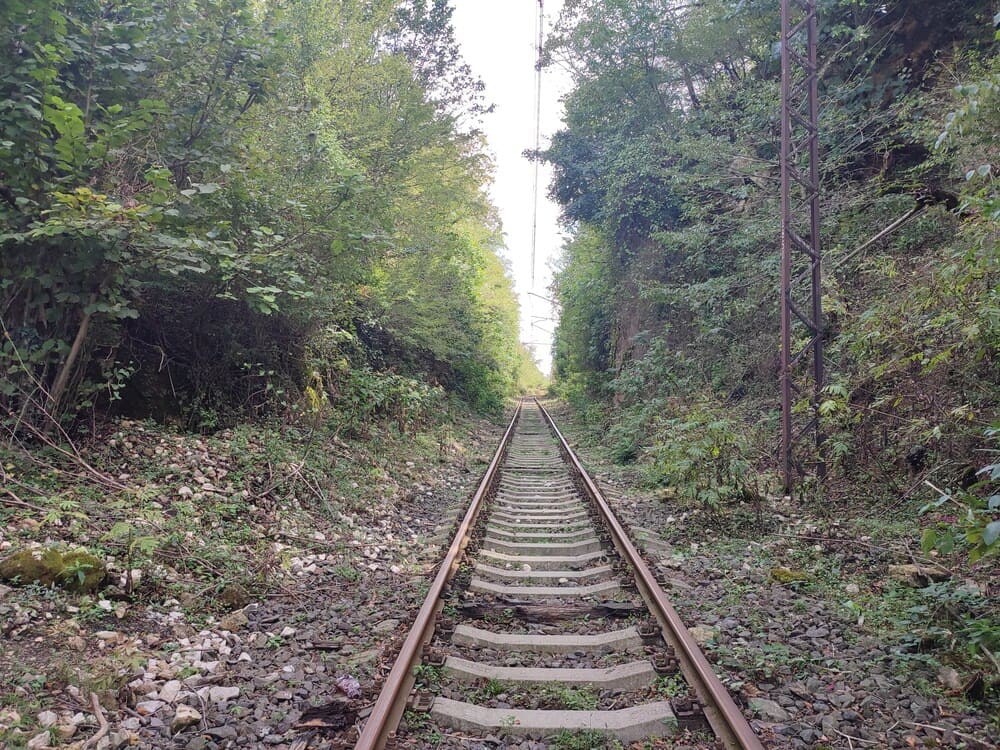
Don’t fret – no trains pass on this route anymore, so it’s totally safe and will save you a couple of miles. Motsameta Monastery is right off the train tracks, around 90 minutes away from Gelati.
I found it to be more impressive, mostly due to its outstanding location on a cliff, surrounded by the river.

From Motsameta you can walk back to the center of Kutaisi in about 90 minutes.
6. Chiatura Mining Town (+Katskhi Pillar and Mgimevi Nunnery)
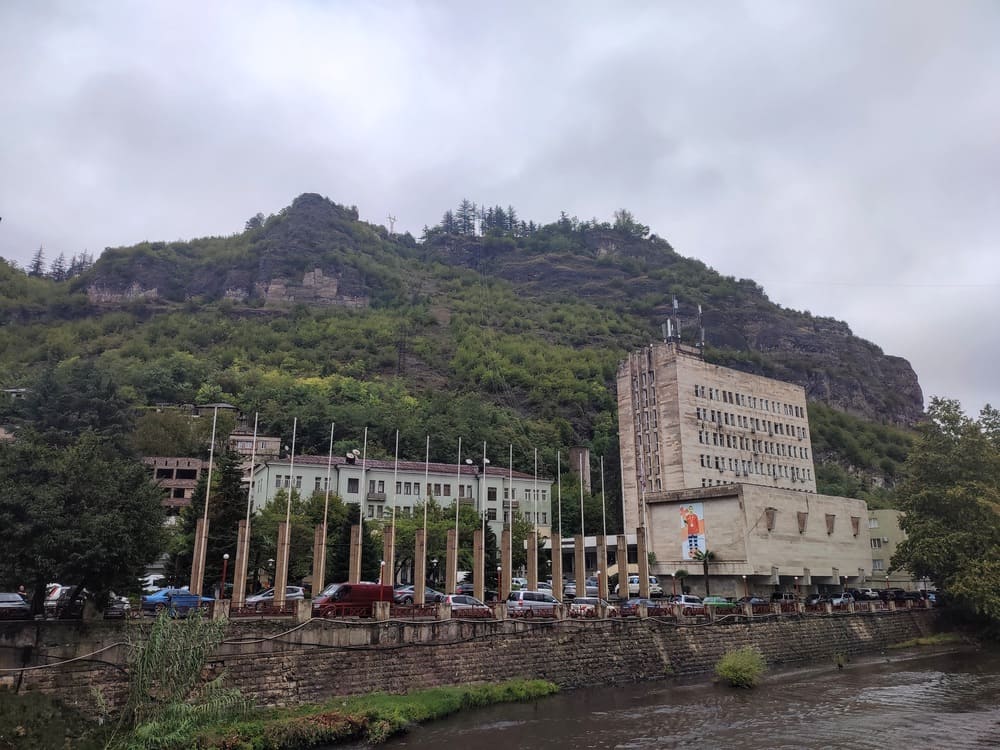
Chiatura was a very busy mining town in Soviet times, but like many other similar working-class cities, it has lost a lot since then.
What makes it unique is the cable car system that connects the different neighborhoods so that the miners can easily get from one place to another – or from their mines to the town.
If you google it, you might see pictures of the old cable cars, definitely not made for tourists. I have bad news – they are no more.
Today, there’s still a system of cable cars, due to the very, very hilly nature of Chiatura, but it’s just 4 lines, all starting from the center. All other lines are defunct.
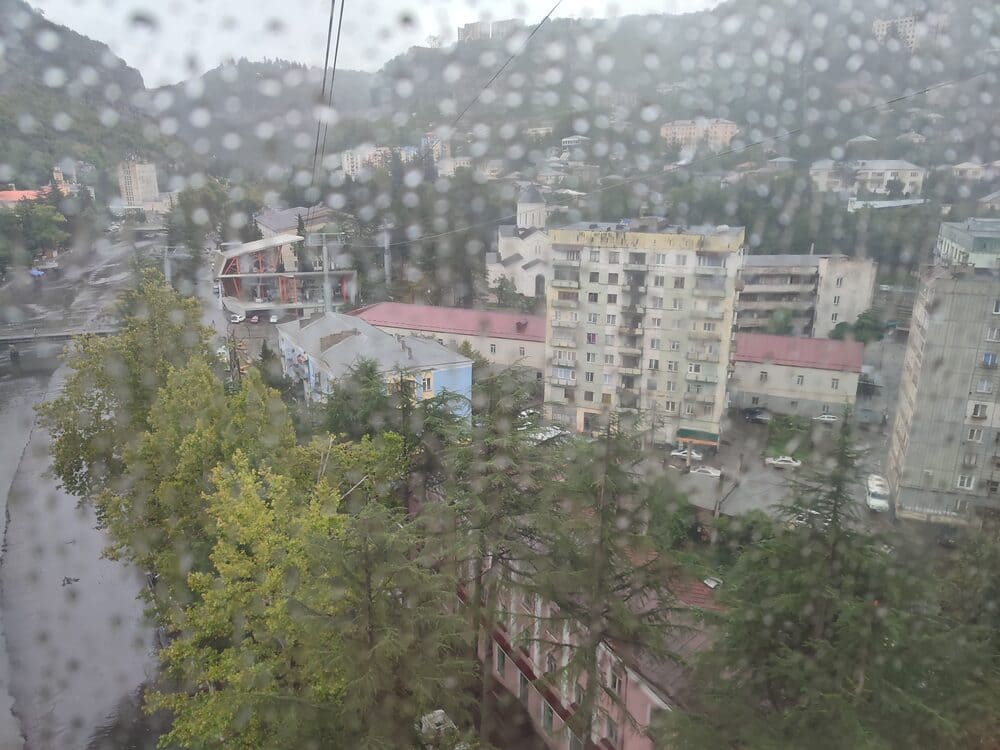
To get to Chiatura get a marshrutka from the main bus station in Kutaisi. It leaves every hour and costs 7 GEL. Keep in mind that the last marshrutka back from Chiatura is at 4 PM.
When I went there, the weather was horrible. It rained all day and was colder than I had planned for.
I definitely did not have a good time and decided to skip visiting the other two attractions in the vicinity – Katskhi Pillar and Mgimevi Nunnery.
For the first one, the hostel owner said: “It’s just a rock, you can’t even go up!“.
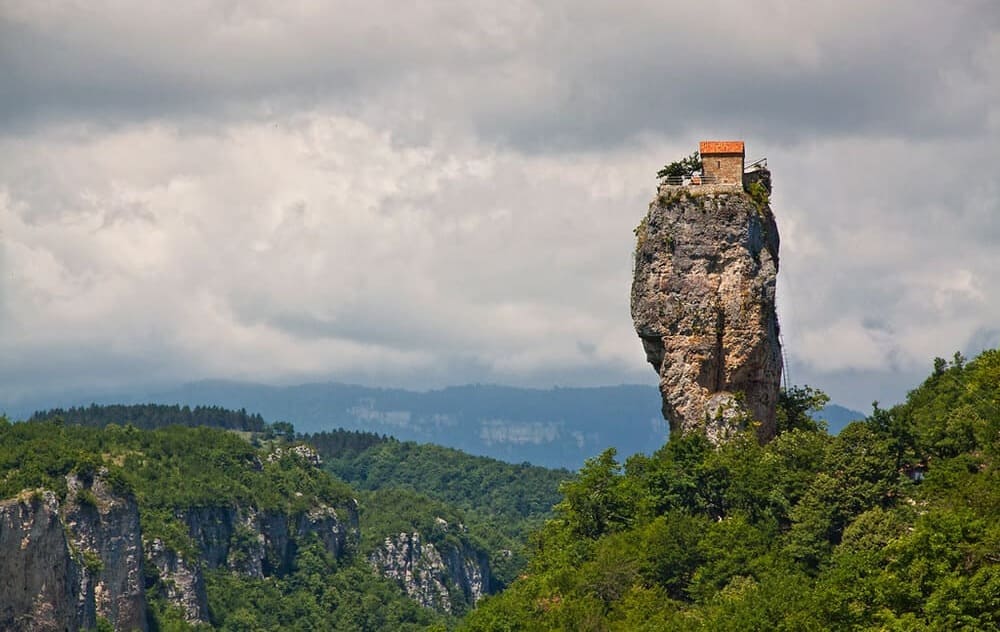
The second one, Mgimevi Nunnery, may be worth it, but the rain was so heavy and I didn’t have an umbrella, so I just got from neighborhood to neighborhood in Chiatura using the 50 tetri per ride (0.2$) cable car network.
This excursion to Chiatura combines all popular attractions and is quite affordable:
Other awesome day trips from Kutaisi
There are many other places around Kutaisi worth visiting that I decided to skip in order to catch the good weather in the mountains around Mestia.
These are the best ones as suggested by my friends at Bao Hostel (a superb hostel by the way):
7. Okatse Canyon and Kinchkha Waterfall
Okatse Canyon is an example of how nature’s forces work to create spectacular landscapes. There’s a 1 km long breathtaking hanging walkway along the edge of the canyon allowing anyone brave enough (okay, okay, it’s all safe really, no bravery needed) to explore its deep valleys, rivers, and beautiful waterfalls.
It’s open every day except Monday, from 10 AM to 6 PM. Book this eco-tour of the Okatse Canyon on Viator.

If you want to do it independently, it’s a bit tricky, as the most convenient way is to have your own car. Otherwise, it’s a lot of marshrutkas and regional minibuses.
Because it’s hard to reach, I advise you to look into tours that include Okatse. The best one combines Okatse with Martvili:
8. Niko Nikoladze House Museum
The museum is dedicated to the founder of the seaport at Poti, Georgia’s biggest on the Black Sea.

It’s only 30 km west of Kutaisi and there are regular marshrutkas every day. The museum presents many items he brought from the West as well as a rich library.
In the museum, you can find the latest technologies at the beginning of the 20th century like a windmill, a washing machine from Berlin, a Kodak camera, etc. It’s a fascinating collection for sure.
9. Akaki Tsereteli House Museum
This museum dedicated to the life of the great Georgian poet Akaki Tsereteli is located in Sashkere, 80 km northeast of Kutaisi. There are regular marshrutkas from Kutaisi. Tickets are 7 GEL (2.6$).
The museum is closed on Sunday and open from 10 AM to 5 PM every other day. The entrance fee is only 2 GEL (0.75$) and you can pay 10 GEL more for a guide.
10. Modinakhe Fortress

Modinakhe Fortress was built at the beginning of the 18th century and served as the residence of royal families.
Archeological evidence suggests it was inhabited loooong before – bronze artifacts and antiques were found in the ground. You can climb the fortress and enjoy the beautiful panoramic views of the Imereti region.
It was under renovation for a while but it has since fully reopened. Entrance is free.
11. Sairme Spa Resort
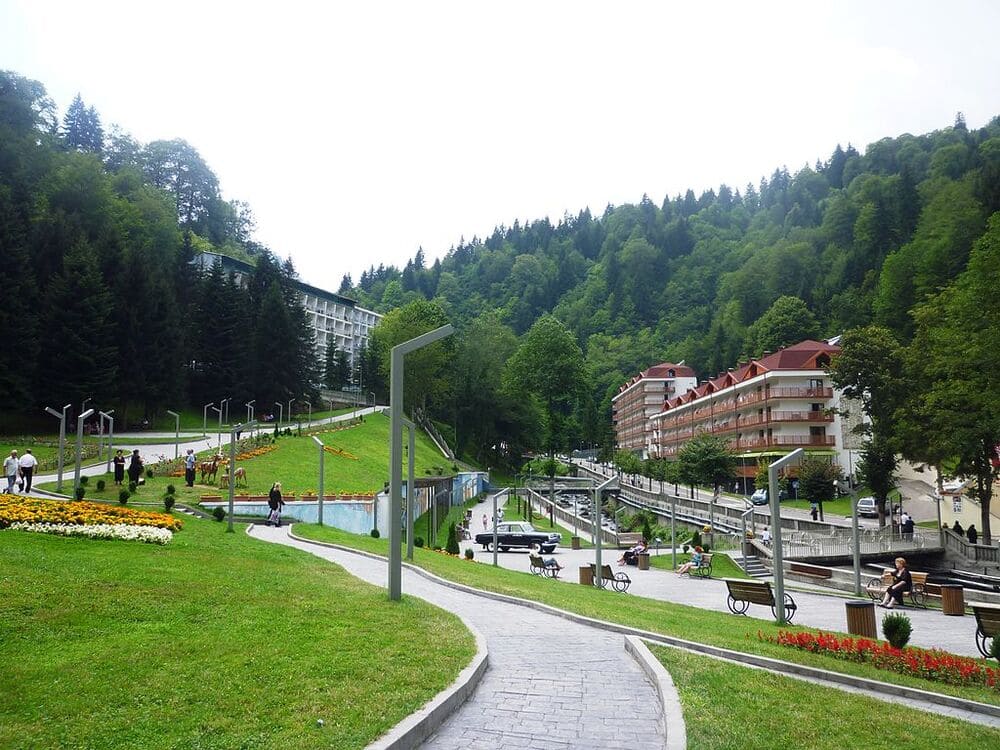
Sairme is a balneoresort with a wide range of healing waters. Each hot spring has its own set of minerals.
In addition to the spa procedures, the resort offers various entertainment activities like zip lining, and a shooting range.
To get to Sairme, take a bus from Kutaisi Central Bus Station towards Baghdati. They depart every hour and cost 3 GEL (1.2$). From the center of Baghdati, you will need a taxi to get to Sairme.
12. Kvasakdara
Kvasakdara is a natural phenomenon of volcanic origin. It’s located southeast of Sairme at 2200 meters above sea level making it an alpine zone site.
The views from the top are spectacular – vistas of the Meskheti Ridge and the River Tzablarastzkali Gorge.
Unfortunately, to get to Kvasakdara, you will need to hire a 4×4 vehicle. Take a bus from Kutaisi to Baghdati, then ask around for a driver to Sairme and/or Kvasakdara. This is the location you want to get to.
Kvasakdara is frequently combined with Sairme because of their proximity to each other.
13. Vani Archeological Museum-Reserve
Vani is one of the most important museums not only in Georgia but in the entire Caucasus region.
It houses artifacts from the Colchis Kingdom and is the ultimate evidence of how people 2 millennia ago lived in these places.
If you’re into ancient history or archeology – this is a must-see museum. Archeological work still continues and new finds are quite frequent – you might even witness one if you go there!
It’s closed on Monday and open 10 AM to 6 PM any other day.
Vani is located 30 km southwest of Kutaisi. To reach it, take a marshrutka from the Central Bus Station at 7:00, 8:00, 9:00, 11:10, 12:10, 13:10, 15:40, or 17:00 for 4 GEL (1.5$).
14. Dikhashkho Geyser
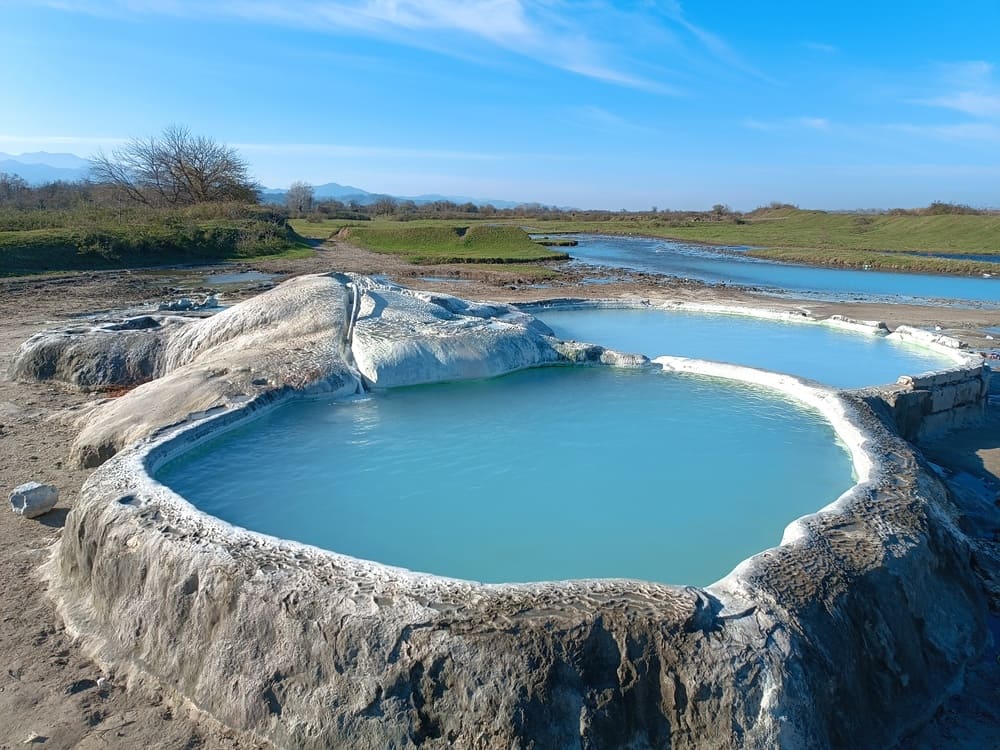
The Dikhashkho Geyser is sometimes also called the Vani Sulfur Pool. It’s an open-air pool with sulfur-rich water from deep underground.
It’s super Instagram-worthy for its oval shape and the fact that it’s in the middle of nowhere. It’s not as acidic as the lake inside Kawah Ijen crater in Indonesia, so you can totally go inside and have a bath.
It’s best to combine a visit to Vani with a visit to the Dikhashkho Geyser. It is located on the main road between Kutaisi and Vani, exactly here. Get off the marshrutka on the main road and walk about 15 minutes to reach it.
15. Zestaponi Market and Tabakini St. George Monastery
Zestaponi market is right in the heart of this small city, only 35 km southeast of Kutaisi.
There you can have a pleasant stroll among the stalls selling everything from fruits and vegetables to nuts, spices, sweets, pickles, and whatnot.
To reach Zestaponi, take a marshrutka from Kutaisi Central Bus Station – they leave around the clock between 8 AM and 6 PM. Price: 3 GEL (1.2$).

From Zestaponi, you can take a taxi to Tabakini Monastery dedicated to St. George. It dates back to the 7th century and although I’m sure at this point you’re a bit fed up with monasteries and churches, this one is unique for housing a fresco of King Bagrat III from the 16th century.
16. Navenakhevi Cave
Navenakhevi Karst Cave is smaller than other caves on this list. It’s 210 meters in length and has 4 halls. The temperature is constantly exactly 14 degrees.
The cave is located 20 km east of Kutaisi. There are 3 marshrutkas daily that go from the Chain Bridge in Kutaisi (the one closest to the Bagrati Cathedral) directly to Navenakhevi. They depart at 10:30, 14:00 and 16:00. Tickets are 2 GEL (0.75$).
17. Ubisa Monastery
I can hear you say “Not another monastery!” Yes, there are so many in Georgia. It’s a deeply pious country after all and one of the first Christian nations, Armenia being the first.
The Ubisa Monastery was built in the 12th century. What distinguishes it from other monasteries is the unique set of murals from the 14th century, heavily influenced by Byzantine art from the same period.
The monastery complex includes a temple, a cell for monks, and a pillar for residential purposes.
The monastery is located 62 km southeast of Kutaisi. If you want to visit this one, it’s on the way to Tbilisi. Take one of the minibuses going to the capital around the clock from 8 AM to 7 PM and get off at Ubisa village.
The ticket to Tbilisi is 12 GEL (4.5$) and you may or may not get a discount going only to Ubisa.
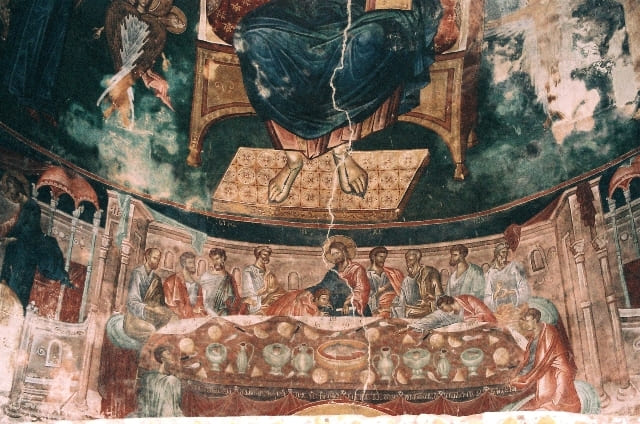
As you can see, Kutaisi has a lot to offer. Way too much even. You can easily spend 2 weeks there and just go on day trips every day.
You may be interested in these things to do in Kutaisi itself or maybe you’re going to Tbilisi and want to save some money by checking out my free things to do in Tbilisi post.
Alternatively, do what I did and go to Mestia to do an awesome 3 or 4-day hike to Ushguli. These were my favorite 4 days in Georgia!
